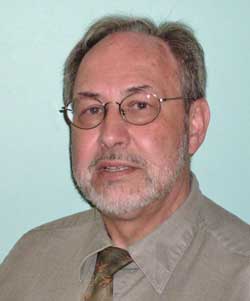
Roman Yasiejko went from doodling as a child to drawing and designing buildings as an adult. He’s an architect who lives in upstate New York with his wife, Rosemarie (and their stealthy cat, Misty). Together, they have two adult sons and two young grandchildren to whom he loves reading stories. He served as the County architect for Dutchess County, NY, for 28 years prior to retiring from municipal work to serve another passion – writing stories for children.
An Interview with Roman
You’re an architect. How did you start writing children’s books?
This is something I’ve wanted to do for a very long time, but was too busy as an architect designing buildings. But the passion was always there inside me. In fact, I wrote the first lines to this story in 1989. Of course, it’s gone through many iterations and revisions since then. So when I retired from my job as a municipal architect, I revisited my passion for children’s stories and started writing.
Designing a building seems very different from writing a book, especially a children’s story. How did you manage it?
It’s not as different as it seems! The creative process is the same, but the medium is different. With architecture and design, I develop a building program and then I sketch and revise, sketch and revise, and repeat. I have others critique my work (clients, architects, neighborhood interests, etc.), then make changes and take the design to each succeeding level until I achieve the final design that’s ready to be built.
When I write, I develop a story line, decide on the story structure, picture the scenes and then move on to sentences and word selection. In between all that, I write and revise, write and revise, and repeat. I have others critique my story (writing group, children’s book authors, editors, school librarians, and my wife!), then make changes and take it to a level that’s ready to submit to editors for publication.
What was your inspiration for your main character, Nicholas, in WHERE THE BEST STORIES HIDE?
When I was a kid, I loved to doodle. That led to drawing which led to a love of design and structure, which in turn led to my career as an architect. More importantly, I watched my son when he had crayons in hand to fill in the coloring book in front of him. He soon had colors flying outside the lines in his own interpretation of the drawing on the page. And so it went with each page of the coloring book. My wife and I quickly decided to give him clean sheets of white paper so he could fill in his own story on a blank page. It didn’t take long before he added sound effects to his color palette to really make the stories come alive. When we’d ask him to tell us his story, he’d explain all the jabs and thrusts of crayon lines and colors on the page (with added sound effects). Sometimes they were about storybook or superhero characters. Other times they were just about his everyday experiences in school or family life. And sometimes, he was the hero in his own story.
Of course, this was all at home where he had the freedom to explore and open up his imagination full throttle. I wondered how he handled it in school (catholic grammar school), because he couldn’t wait to take off his tie and uniform and really dig into his storytelling. That led to WHERE THE BEST STORIES HIDE.
So, this is a very personal story for you. Why did you decide to tell it?
While it’s a personal story, I believe it’s universal as well. I think every child, at some point, feels the need to burst out with their own expression of who they are. We can only hope that as parents and teachers and adults in general, we have the foresight and understanding to cultivate their growth and not stymie it.
In WHERE THE BEST STORIES HIDE, Nicholas is just a kid, a good kid, although one with a powerful imagination. He happens to open it up when the class is concentrating and working on their own art projects. So, he was just lost in the moment and inadvertently disrupts the quiet classroom with his sound effects. Of course, the teacher responds with a polite but firm request to focus on the task at hand. Nicholas gets lost in the moment again, and the teacher is faced with an awkward situation. Order and structure are important in a classroom full of children, but so is each child’s individuality, creativity and imagination. Hence, the challenge to Nicholas to show and tell exactly what he was working on. Nick surprises everyone when his doodles grow along the whiteboard and transform into simple, storyboard-like drawings that follow his narrative and noises. The teacher realizes that Nicholas is the hero of his own imaginative story, loosens up, then encourages the rest of the class to enjoy their art projects in their own way in a more creative, relaxed and doodled-up classroom. After all, the teacher knows that, just like Nicholas, every child should have the opportunity to be the hero of their own story!
What do you want a child to feel when they hear or read this story?
That it’s okay to be yourself. That it’s fine to doodle and search outside the lines sometimes to find where your own best stories hide. And to feel that you have the courage and creativity to solve problems and be your very best at what matters most to you.
This is a rhyming picture book story. Why did you structure it that way?
First, there’s the story itself. The very act of doodling and expressing your imagination is poetic and lyrical. So, for me, that determined the structure of the story. I was going to tell it in rhyme. Even in 1989, my first thoughts for this story were in rhyme. As the scenes progressed, it became easier to continue the rhythm. The sentences and word selections didn’t feel forced. In fact, they felt strong and followed the scenes and structure of the story quite naturally.
I always felt that children were attuned to the rhythm, the cadence, the beat of a rhyming story. It’s musical to their ears. And so much fun to read aloud and watch as their smiles curl the corners of their lips and light up their faces. That is the very definition of joy! You can look it up!

